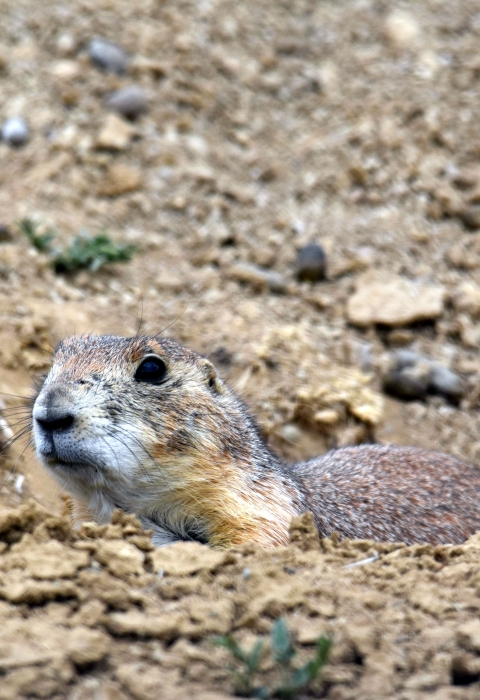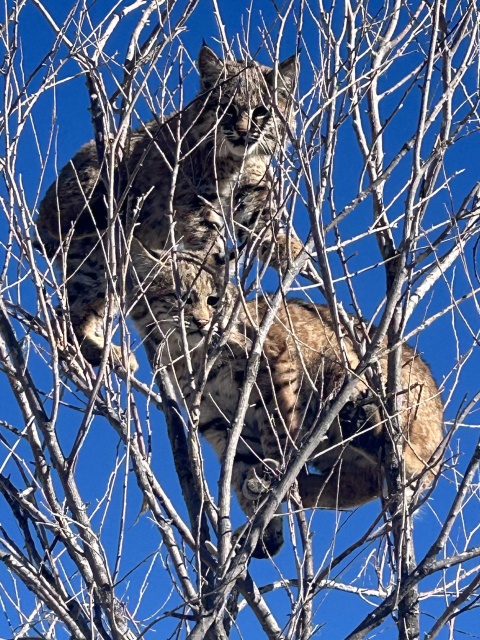What We Do
The National Wildlife Refuge System is a series of lands and waters owned and managed by the U.S. Fish and Wildlife Service. Wildlife conservation is at the heart of the refuge system and drive everything refuge staff do from the purpose a refuge is established, to the recreational activities offered there, to the resource management tools we use. Selecting the right tools helps us ensure the survival of local plants and animals and helps fulfill the purpose of the refuge.
Approximately 250 acres of the available crop fields are in production each year depending on the availability of water. Winter wheat and triticale, as well oats and barley, are planted for wintering and migrating waterfowl and cranes.
The 700 acres of wetland habitat on the refuge includes three lakes which are supplemented during the wet years by two natural playa lakes. Lakes 12, 13, and 14 store water and are managed by the Vermejo Conservancy District for irrigation to local farmers, ranchers and the refuge. Open water serves as loafing areas for waterfowl, year-round habitat for marsh birds, and habitat for shorebirds on the seasonally flooded mudflats. Shorelines have beneficial vegetation such as smartweed and bulrush that provides ideal nesting cover and substrate for invertebrates, which waterfowl and shorebirds will feed on. Many species depend upon the refuge's wetland habitat for part or all of their life cycle.
Woodlots on the refuge are primarily plains cottonwood, Siberian elm, white poplar, and New Mexico locust. The woodlots are actually remnants of old homesteads that today provide unique foraging and nesting habitat for raptors, migrant songbirds, and other important species. Look for Swainson’s hawks, red-tailed hawks, great horned owls, ravens, mourning doves, wild turkey, warblers, and orioles. The woodlots also provide cover for resident mule deer and white-tailed deer and occasional visitors such as mountain lion and black bear.
Management and Conservation
Providing optimal habitat for wildlife on the refuge is a management priority. Many management practices for Maxwell National Wildlife Refuge have waterfowl in mind to remain in line with the refuge mission.
Refuge Management Practices
Browse and Grain Production:
Every year refuge staff farm on the refuge to provide needed food sources for the waterfowl that find Maxwell National Wildlife Refuge a long term or temporary home. Many of these crops include millet, sunflower, sorghum, and more.
Prescribed Burning:
Historically in the great plains' habitat, seasonal fires would roar across the landscape to allow for the removal of leftover dead material on the landscape and to recycle nutrients back into the soils. The goal of the refuge when using this management practice is to once again follow the same allowances of many plants on the refuge. This practice all assists in the removal of invasive species invasive species
An invasive species is any plant or animal that has spread or been introduced into a new area where they are, or could, cause harm to the environment, economy, or human, animal, or plant health. Their unwelcome presence can destroy ecosystems and cost millions of dollars.
Learn more about invasive species , their systems cannot persist after fire, allowing for more native species to replace themselves in our landscapes restoring what once was.
Invasive Species Control:
On many National Wildlife Refuges, invasive species are an occurrence that needs management. Practices that are used on Maxell include spraying and manual removal. Manual removals have a few different methods that can be used but most often pulling, cutting, and mulching can be seen.
Water Manipulation:
Water drives the lives on many of the wildlife species that visit the refuge. To allow for farming and many of the wildlife species to grow and persist, refuge management will manipulate the levels of water on the refuge in different areas. Some manipulation may be driven by the changes in water levels of the lake as irrigation water stored in them is removed.
Our Projects and Research
National Wildlife Refuges are here for wildlife and the American public. Research opportunities are open for universities and organizations to come out to the refuge to learn about the natural environment. For more information on how you can research on the refuge, please contact Chris Moehring.
Law Enforcement
U.S. Fish and Wildlife Service law enforcement officers have a wide variety of duties and responsibilities. Officers help visitors understand and obey wildlife protection laws. Law Enforcement officers address illegal activities including poaching, taking of endangered species, dumping of trash, illegal operation of all-terrain vehicles, trespassing and more. They enforce certain regulations that are necessary for the safety of visitors and the protection of wildlife and wildlife habitat. Visitors to the refuge are subject to Federal, State, and local laws and regulations.
Sometimes the refuge must close public areas due to improvements that are being made, prescribed burns, or other management issues. This information and associated regulations are posted at the Visitor Center so please be sure to check in to learn more about what is happening.
Law enforcement issues should be referred to the refuge at 505-398-6481.
You may also report violations to New Mexico State Police @ 505-425-6771.
Injured Wildlife: Please contact The Wildlife Center, a State permitted wildlife hospital located in Espanola, New Mexico. Their telephone number is: (505) 753-9505.
Laws and Regulations
Special Use Permits enable the public to engage in legitimate wildlife-related activities and ensure that such activities are carried out in a manner that safeguards wildlife. Additionally, some permits promote conservation efforts by authorizing scientific research, generating data, or allowing wildlife management and rehabilitation activities to go forward.
At Maxwell National Wildlife Refuge, wildlife comes first. For this reason, Special Use Permits (SUP) are required in order to conduct the following types of activities
- General
- Research
- Commercial




